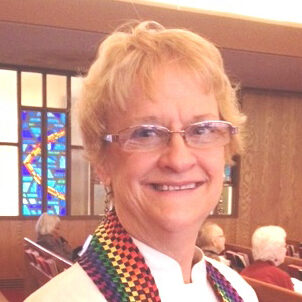A Mission-Based Financial Commitment Program
We talk about mission. We do mission. So how can we make our church’s annual financial commitment program mission-based, instead of sounding like one more “sell job” about our church’s programs?
1. Keep the main thing the Main Thing. Most people really do hear what we say. It’s just that they have lots of buttons that get pushed from their previous experiences. So if we refer to a line-item budget anywhere in the process, they’ll think the “campaign” is about “raising the budget.” That’s where intentional language comes into play. Most shorthand ways to refer to the financial commitment program point in the direction of selling. And that implies that they are customers and consumers buying the church’s services.
So do not do a line item budget until after members have had a chance to respond to God’s work in the world. Do a narrative budget instead – by dynamics of your mission, not by program categories. Divide staff and facilities time, as well. Make your narrative primarily visual, and interlace it with in-person stories. The point is not “What our church can do for you,” but “Look at what God is doing in the world!”
2. It’s all about attitude. The purpose of a financial commitment program is not just to fund our ministries. Its main purpose is to connect our living and giving with God’s overwhelming generosity towards us. Whether we have a lot or a little in money, possessions, time or personal involvement, the issue is our attitude. Do we think we own what God has entrusted to us, or do we want to spend it well, according to God’s priorities, in line with God’s overwhelming grace towards us?
3. Highlight First Fruits Living. “First fruits living” is giving the first and the best to God and managing all the rest according to God’s generosity.1 It refers to all of our resources and relationships. It challenges us to give and use 100 percent of what God has given us. Teaching first fruits living can help people let go of fixations on magic percentages or static money amounts, and focus on responding to God’s generosity towards us with all of who we are and what we have.
4. Look for changed lives. People give to honest-to-God change that makes a difference in people’s lives. And they are savvy consumers, suspicious of hype that masquerades as the real thing. So go overboard answering the “So what?” question from the start. In your preparation time, discover children, youth and adults who have been touched by God, through your involvements. Look for a personal connection, which usually exists only three degrees away.
We all want to invest ourselves in what the Living God is doing in people’s lives. It may be one person at a time in a specific youth or senior, child, adult or family, whether they are right in our neighborhood or around the world.
5. Link to worship and small group life. Give people a chance to discuss God’s generosity towards us and our growth in generous-hearted living. Make the program theme your worship theme for five weeks. Offer a small-group series for people to explore the topics out of their own life experiences.
6. Make it part of a Generosity Plan. It takes a written plan to help the congregation keep growing in generous-hearted living. Use the new United Methodist Guidelines booklet, Stewardship: Nurturing Generous Living2 to create a Generosity Team and establish a twelve-month Generosity Plan. The booklet will guide you with essential elements, how to support the work of the church’s other ministries, and how the financial commitment program fits into the larger picture. Start with a few baby steps, but start. You can’t grow vibrant, faithful stewards if it’s always connected to fundraising or stuffed into one season.
7. Remember Who’s in charge. Your congregation is God’s church and ministry. Put your leadership into it, but trust God to transform lives through the giving.
Betsy Schwarzentraub
Written 8/2013 for Yellowstone Conference UM Foundation
1 = Cf. Betsy Schwarzentraub, Afire With God, p. 91 and the writings of Lynn Miller and Mark L. Vincent (Herald Press).
2 = Copyright 2012 by Cokesbury (Abingdon Press).
Having a Mission-Based Financial Commitment Program by Betsy Schwarzentraub is licensed under a Creative Commons Attribution-NonCommercial-NoDerivs 3.0 Unported License.


